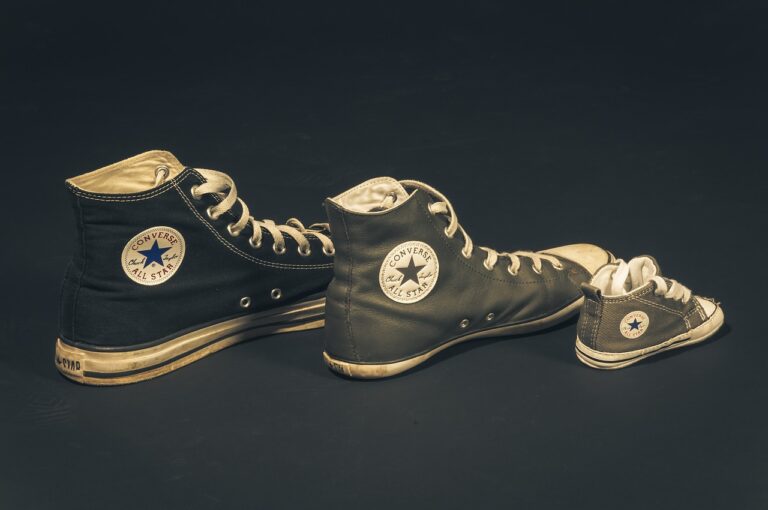Fashion and Sustainable Packaging: Reducing Environmental Impact Through Eco-Friendly Packaging Solutions
Eco-friendly packaging in the fashion industry offers a myriad of advantages that go beyond just the environmental impact. By opting for sustainable packaging solutions, fashion brands can enhance their reputation and appeal to environmentally conscious consumers. This can result in increased brand loyalty and positive word-of-mouth marketing, ultimately boosting sales and profitability.
Moreover, eco-friendly packaging can also lead to cost savings for fashion companies in the long run. While there may be initial investments required to switch to sustainable materials, the efficiency and reusability of such packaging options can help reduce operational expenses over time. Additionally, as more consumers demand sustainable practices from brands, investing in eco-friendly packaging can position fashion companies as industry leaders, attracting socially responsible investors and stakeholders.
Challenges of Implementing Sustainable Packaging Solutions
One of the primary obstacles faced in the fashion industry when it comes to implementing sustainable packaging solutions is the cost factor. Eco-friendly packaging materials tend to be more expensive than their traditional counterparts, leading to concerns about the financial viability of making the switch. Many companies may hesitate to invest in sustainable packaging due to the initial higher costs involved. This can create a barrier for smaller businesses that operate on tighter budgets.
Another challenge in adopting sustainable packaging solutions is the lack of infrastructure and resources available for eco-friendly options. The fashion industry operates on a large scale, and transitioning to sustainable packaging requires significant logistical support. From sourcing environmentally friendly materials to implementing efficient recycling processes, the industry faces a substantial gap in infrastructure that hinders the widespread adoption of sustainable packaging solutions. Without the necessary resources in place, companies may struggle to effectively incorporate eco-friendly practices into their packaging operations.
Innovative Materials for Eco-Friendly Packaging
Eco-friendly packaging has become a key focus in the fashion industry as brands strive to reduce their environmental impact. Innovative materials play a crucial role in this shift towards sustainability, offering alternatives to traditional packaging options that are harmful to the planet. From biodegradable plastics made from plant-based sources to compostable materials derived from agricultural waste, the fashion industry is exploring a range of innovative solutions to minimize its carbon footprint.
One promising material gaining traction in eco-friendly packaging is mycelium, which is a sustainable alternative to foam and plastic-based packaging. Derived from mushroom roots, mycelium can be cultivated in a controlled environment and molded into various shapes to fit the packaging requirements of different products. This versatile material is not only biodegradable but also lightweight and durable, making it an ideal choice for brands looking to reduce their environmental impact without compromising on functionality and aesthetics.
Mycelium is a sustainable alternative to foam and plastic-based packaging
Derived from mushroom roots, mycelium can be molded into various shapes
Biodegradable, lightweight, and durable material ideal for eco-friendly packaging
In addition to mycelium, brands are also exploring the use of seaweed-based materials for eco-friendly packaging. Seaweed offers a renewable and biodegradable alternative to traditional plastics, with the added benefit of being abundant in our oceans. By harnessing the natural properties of seaweed, brands can create packaging solutions that not only reduce waste but also contribute to marine conservation efforts.
Seaweed-based materials offer a renewable and biodegradable alternative to traditional plastics
Abundant in oceans, seaweed can help reduce waste and contribute to marine conservation efforts
Furthermore, upcycled materials such as recycled cardboard and paper are being utilized by fashion brands for their sustainable packaging needs. By repurposing materials that would otherwise end up in landfills or polluting our environment, brands can minimize their carbon footprint while creating unique and visually appealing packaging options for their products.
Upcycled materials like recycled cardboard and paper help minimize carbon footprint
Repurposing materials reduces waste that would end up in landfills or pollute the environment
What are the benefits of eco-friendly packaging in the fashion industry?
Eco-friendly packaging in the fashion industry helps reduce the carbon footprint, minimize waste, and showcase the brand’s commitment to sustainability. It also appeals to environmentally-conscious consumers.
What are the challenges of implementing sustainable packaging solutions?
Some challenges of implementing sustainable packaging solutions include higher costs, limited availability of eco-friendly materials, and potential changes in packaging design or logistics.
What are some innovative materials for eco-friendly packaging?
Some innovative materials for eco-friendly packaging include biodegradable plastics, recycled paper and cardboard, compostable packaging, and plant-based alternatives like bamboo and sugarcane. These materials are more sustainable and help reduce environmental impact.







